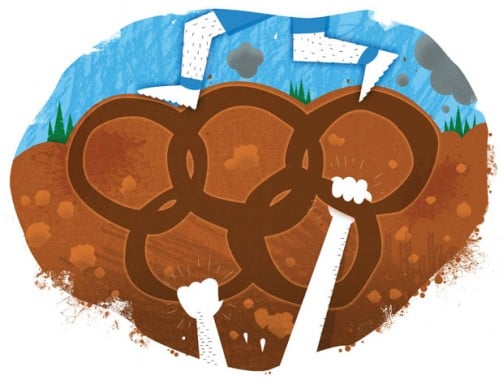TRAIL RUNNING
Over the past decade, trail and mountain running have become one of the world’s fastest growing sports. More than 35 countries are typically represented at the World Mountain Running Championships.
To be considered by the International Olympic Committee, a sport must be practiced by at least 50 countries. We’re on the way there. We need to reach out to the many countries that practice the discipline but don’t compete on the world stage due to lack of funding and lack of support from their federation. If we can rally them to join us in aiming for the Olympics, there’s a better chance for them to get the help they need, which will help our sport grow even more.
Trail running also has sweet visual appeal: runners charge up oxygen-depriving ascents with spectacular vistas (not unlike those seen in alpine ski events), and speed down gnarly rock-strewn single-track trails. And the course length can be any distance and cover many types of terrain, making it ideal for the ever-changing venues of the Games. More road runners are starting to race on the trails and in the mountains. Media attention and industry support for trail running has flourished. And it’s a sport that anyone can identify with and participate in—weekend hikers and non-elite athletes alike.
Sports have come and gone over the history of the Olympics. Tug-of-war was an Olympic sport until 1920. This should leave room for fresh disciplines to be considered. Trail running has its roots with our ancestors who ran over hill and dale to capture their dinner. Phidippides, the first marathon runner, wasn’t running paved roads; he was a trail runner. We’ve come a long way since then, and we’ve waited a long time for our discipline to be recognized by the folks who preside over the Olympic Games.
With American competitors among the 2011 World Mountain Running Champions, our country is poised to be on the podium. That means gold to add to the Track & Field medal haul. Isn’t that reason enough for us to lobby support for inclusion on the Olympic docket?
Nancy Hobbs is the executive director of the American Trail Running Association.
CLIMBING
Climbing in the Olympics: why the heck not? After all, we’ve endured decades of rhythmic gymnastics, figure skating, race walking, and that non-sport of all sports, baseball, so I say climbers belong. Climbing’s badass, whether you’re pulling plastic, sketching above RP’s, running ridges in the Alps, or trudging up Everest with white-collar adventurers. Climbing appeals to our fundamental primate instincts: go up, go higher, get above the other girl, clip the chains, and mug for the camera. It belongs in the Olympics!
Now that the International Federation of Sport Climbing has been recognized by the International Olympic Committee, lead climbing, speed climbing, and bouldering can be reviewed for inclusion for the 2020 Olympic Games. I say, tie these kids in and let them dyno their tough little tendons into shredded jerky. Give ’em a shot at hearing their national anthem and appearing on a cereal box.
In my opinion, lead climbing would be the most exciting to watch, with the drama of sudden falls above protection bolts, whereas speed climbing is to climbing what indoor soccer is to soccer, the USFL to the NFL, Doug Flutie to Brett Favre. And nobody will understand bouldering: there’s no appearance of risk and the winners will make it look like they’re climbing a ladder. The average couch-hero will say, “That don’t look that hard.” And the way kids climb these days, he’ll be right!
With that said, I do worry that competitive climbing is going the way of Olympic gymnastics, with pre-pubescent heroics performed by kids plucked from their families and entrusted to mustachioed men from Eastern Europe. The latest IOC rules require participants to be 16, so maybe that will keep the sport from becoming all about the kids. Still, I wouldn’t be surprised if we keep seeing tiny competitors who have intense talent but not the grizzle that comes with years of experience.
Be that as it may, I want to see mountain climbing in the Olympics. I’ll keep my chin up…until I have to sit through synchronized swimming to see the lead finals, that is. So, see you in 2020, wherever the Games will be. If I stop eating now and start doing a few pull-ups, I might just make the cut. These young ‘uns won’t know what hit ’em.
Rob Coppolillo is training to be a mountain guide at the American Mountain Guides Association and is a contributing editor at Elevation Outdoors Magazine in Colorado.
Read about news of the odd and weird from around Blue Ridge in August’s High Five







